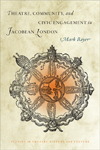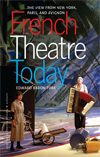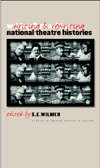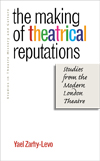Theatre, Community, and Civic Engagement in Jacobean London
Finalist for the 2012 George Freedley Memorial Award
“An important book by a young scholar. . . . Bayer’s methodology is assured, his research fully accomplished, and his writing always lucid and enjoyable. This will rapidly become recognized as a highly significant monograph in early modern theatre history.”—Peter Holland, author, The Ornament of Action: Text and Performance in Restoration Comedy
“In this fascinating study, Mark Bayer gives us good reason to change our minds about the early playhouses. Concentrating on the Red Bull and Fortune theatres, Bayer shows that, far from being a place of crime and marginal activity, the theatre was instead a site of social solidarity. This is a book that everyone interested in the culture of the early commercial playhouse will want to read.”—Douglas Bruster, author, Drama and the Market in the Age of Shakespeare
Taking to heart Thomas Heywood’s claim that plays “persuade men to humanity and good life, instruct them in civility and good manners, showing them the fruits of honesty, and the end of villainy,” Mark Bayer’s captivating new study argues that the early modern London theatre was an important community institution whose influence extended far beyond its economic, religious, educational, and entertainment contributions. Bayer concentrates not on the theatres where Shakespeare’s plays were performed but on two important amphitheatres, the Fortune and the Red Bull, that offer a more nuanced picture of the Jacobean playgoing industry. By looking at these playhouses, the plays they staged, their audiences, and the communities they served, he explores the local dimensions of playgoing.
Focusing primarily on plays and theatres from 1599 to 1625, Bayer suggests that playhouses became intimately engaged with those living and working in their surrounding neighborhoods. They contributed to local commerce and charitable endeavors, offered a convivial gathering place where current social and political issues were sifted, and helped to define and articulate the shared values of their audiences. Bayer uses the concept of social capital, inherent in the connections formed among individuals in various communities, to construct a sociology of the theatre from below—from the particular communities it served—rather than from the broader perspectives imposed from above by church and state. By transacting social capital, whether progressive or hostile, the large public amphitheatres created new and unique groups that, over the course of millions of visits to the playhouses in the Jacobean era, contributed to a broad range of social practices integral to the daily lives of playgoers.
In lively and convincing prose that illuminates the significant reciprocal relationships between different playhouses and their playgoers, Bayer shows that theatres could inform and benefit London society and the communities geographically closest to them.






